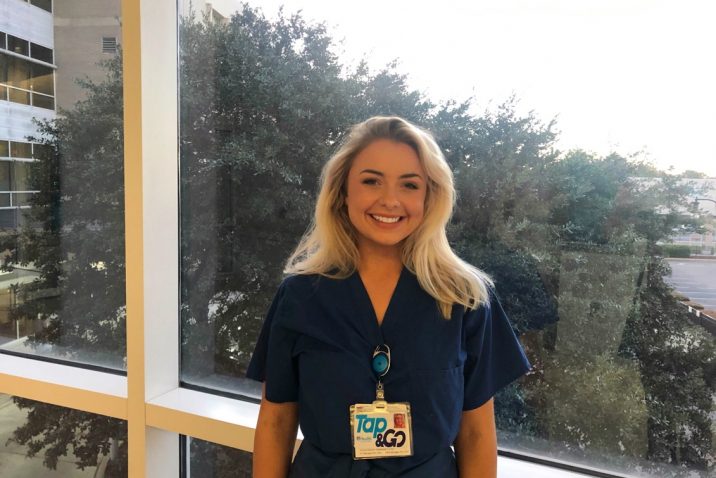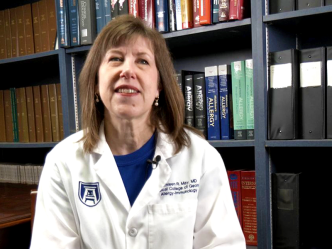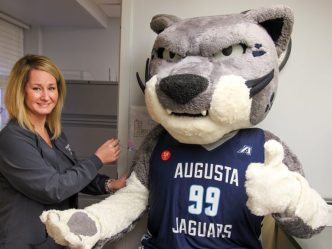Amber Hendrix was a typical 19-year-old college student enjoying spring break at home in Waynesboro, Georgia, when her life was forever changed.
While sunbathing in her front yard, she was run over by a car in a freak accident.
“I got dragged about 30 feet,” she said. “It was brutal; it was horrific. Once the EMS got there, I was folded under the car like a pretzel.”
Hendrix was taken to the emergency trauma unit at Augusta University Health, but she knew right away that this would not be something she would recover from easily.
“As soon as it happened, I thought, ‘I’m never going to walk again,’” she said. “I knew this was very bad.”
After she underwent testing to find out where nerve damage had taken place, Hendrix said it did not look good.
“Based on their reactions, I thought I was probably paralyzed.”
That night, Hendrix underwent surgery, and then three days later, had spine surgery performed by Dr. John DeVine, chief of spine surgery service and professor of orthopaedic surgery at the Medical College of Georgia.
During her stay at AU Health, DeVine checked in on her, but Hendrix said at the time, she was not in the mood for his cheerful demeanor. At this point, she had been told she would likely never be able to walk.
“The best I would be able to do is walk with an aid, like a walker or a cane,” she said. One thing she was determined to never have were braces on her legs.
“She actually fractured the L5, which is the anchor of the spine, the lowest vertebrae of the spine where it attaches to the pelvis,” DeVine explained. “It was crushed completely, with most of it in the canal compressing her nerve root, so it was a horrible injury. We don’t really see burst fractures of L5 very often. The fact that she had every lumbar vertebrae fractured is something you don’t often see, as well.”
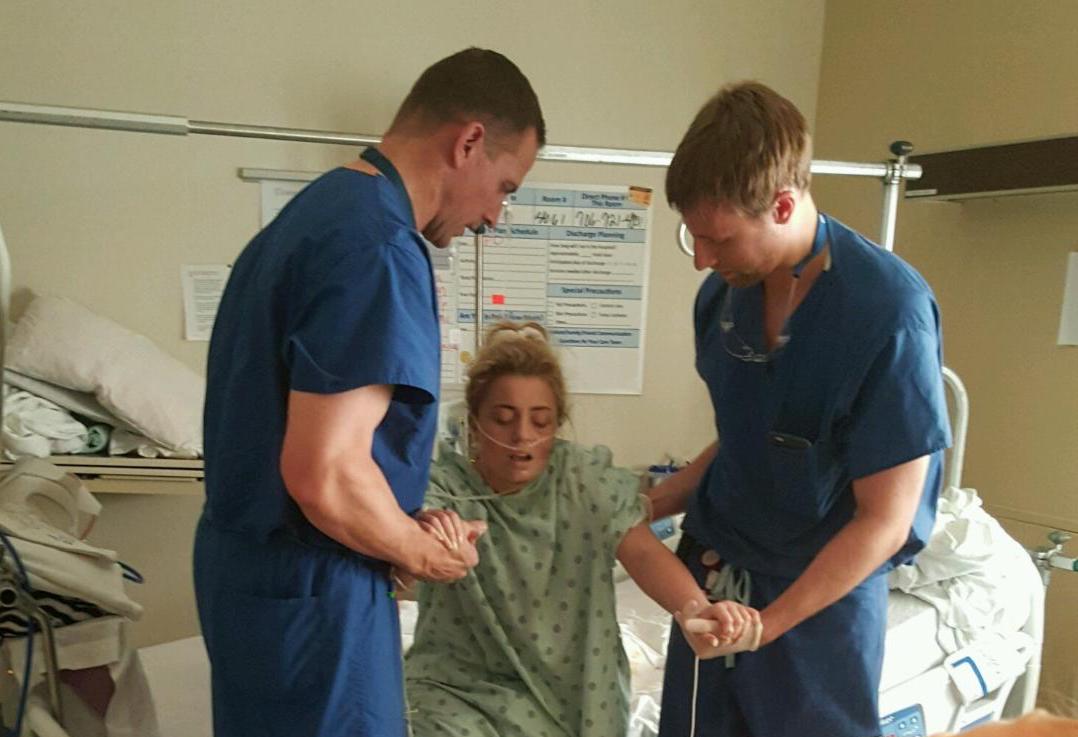
Even so, DeVine was not willing to give up, and as time went on, neither was Hendrix. She underwent more surgeries, and some of her nervous system was reconstructed.
When she moved into the rehabilitation part of her recovery, DeVine encouraged her as she relearned to walk.
“They talk about these stages of recovery after something traumatic,” DeVine explained. “It didn’t take long for her to figure out that she was going to focus on what she could control. The only thing she could control was how she was going to contain her recovery. She wanted to get back to the point where she could be as normal as she could be.”
Hendrix noticed that DeVine wasn’t quick to give praise, so when he told her that she did a good job, she truly believed she was making great progress.
“He was just what I needed at the time,” she said. “I felt supported and I never felt pitied.”
As she was being rehabilitated at Walton Rehabilitation Hospital, Hendrix grew more interested in the medical profession.
“I think she was intrigued by some of the people who cared for her, and I think she became interested in the field of health care,” DeVine said.
After progressing from a wheelchair to a walker, Hendrix was finally able to walk normally seven months after the accident, and after another 15 months, she could finally run.
Once she graduated Georgia College with a chemistry degree, Hendrix enrolled in the College of Nursing at Augusta University. She is now working at AU Health as a nurse, where she has had a chance to look after patients in similar predicaments to hers, and she is taking a special interest in those patients around her age who may be concerned about their ability to walk in the future.
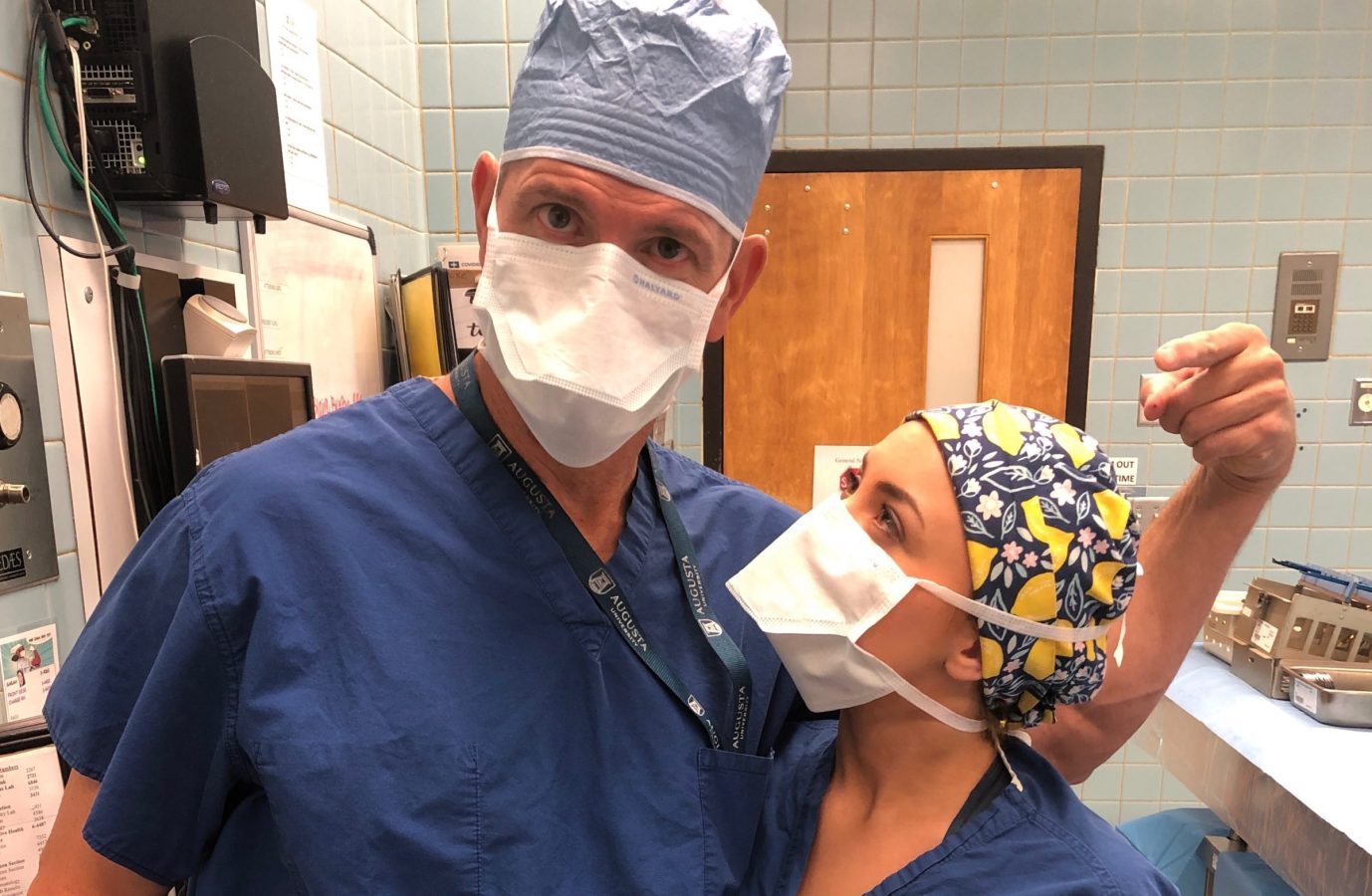
“It’s been an adjustment,” Hendrix said of starting her nursing career. “I just started orthopedics, which I love, which [DeVine] does. Hopefully that’s where I’ll be working.”
Despite lasting nerve damage in her feet, Hendrix describes herself as “90 percent” recovered now.
“You would never know that she had this horrific accident watching her move around the operating room,” DeVine said. “It was just a remarkable recovery.”
 Augusta University
Augusta University
